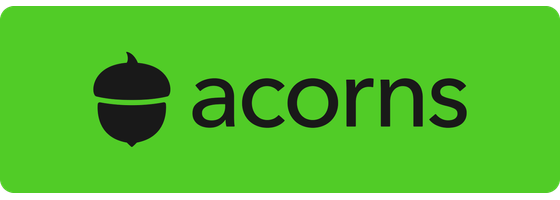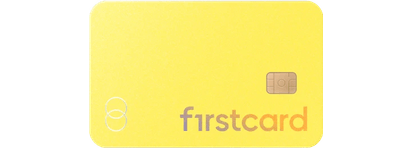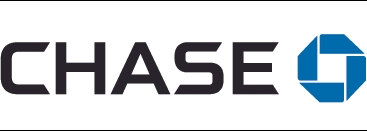Best Bank Accounts for Kids (Checking and Savings) in November 2024

Our evaluations and opinions are not influenced by our advertising relationships, but we may earn a commission from our partners’ links. This content is created by TIME Stamped, under TIME’s direction and produced in accordance with TIME’s editorial guidelines and overseen by TIME’s editorial staff. Learn more about it.
The best bank accounts for kids feature low fees, convenient access, and helpful money management tools. Kids can also earn interest with a savings account.
Opening a bank account on behalf of a child can be a great way to introduce them to the basics of money management. Online banks and traditional banks may offer checking accounts and savings accounts for kids, though they aren't all alike.
The best bank accounts for kids are ones that are easy to open, charge minimal fees, and provide multiple ways to access money. They can also come with added benefits, such as a debit card or a great rate on savings deposits.
Axos First Checking is designed specifically for teens aged 13 to 17. This account features zero monthly maintenance fees, overdraft fees, and non-sufficient-funds fees, with a low opening deposit requirement of $0.
Checking account balances earn interest and teens have access to more than 91,000 ATMs. Axos refunds up to $12 in foreign ATM fees monthly. Daily transaction limits of $100 for cash withdrawals and $500 for debit card purchases allow teens some freedom in spending while encouraging them to get in the habit of tracking transactions.
Acorns Early (formerly GoHenry) is a reloadable debit card for kids as young as six that includes a savings component to help them reach their goals. Parents can set up a GoHenry account and add money with no load fees or transaction fees. There are no foreign transaction fees either, which is great if your family occasionally travels abroad.
There is a monthly fee to use Acorns Early, but it's relatively low. Parents can add up to four child accounts for $5/mo for a single child; $10/mo for up to 4 children and can sign up for a free one-month trial to test it out. It's also worth noting that kids can use their debit card at any ATM to withdraw cash at no fee for those transactions
Step is a next-gen financial platform that allows teens to spend, save, and invest while building credit with a secured Visa debit card. Teens get access to a mobile banking app, a Step account, and a Step reliable spending card with no monthly fees or minimum balance requirements. There are no overdraft fees either.
The Smart Pay feature allows teens to build credit history as they spend, without racking up debt. Step uses your transaction history to report positive payment history to the three major credit bureaus. Teens can also earn a competitive rate on savings or start investing through the Step app with as little as $1.
Capital One 360 offers two banking options for kids: MONEY teen checking and kids savings accounts. The teen checking account is a joint account that teens can share with a parent. Teens get a debit card for spending, and both parents and teens can manage the account through the Capital One 360 mobile banking app.
There are no minimum deposit requirements for teen checking or the kids savings accounts. The Capital-One 360 savings account earns 2.50% APY* and it's possible for parents to set up multiple accounts to fund different goals. There are no monthly maintenance fees or fees of any kind associated with either account. Teens also have access to more than 70,000 fee-free ATMs nationwide.
FirstCard is a secured spending card that's designed with college students in mind. Unlike traditional secured credit cards, FirstCard has:
There's no credit check required to open a First Card account. Students can choose from a free FirstCard account or upgrade to First Card+ for a $2.99 monthly fee. Both accounts pay interest on balances just like a savings account, but the rate is higher with First Card+.
Eligible purchases earn cash back. Students can withdraw cash at any ATM, but it's worth noting that FirstCard charges $2.50 per transaction.
Chase First Banking is a debit card that allows kids to spend, save, and withdraw cash at more than 15,000 Chase ATMs. There are no minimum deposit requirements or monthly fees and parents can open an account for a child aged 6 to 17.
Kids can use their Chase debit card to make purchases in stores or online. Parents can set spending limits and use alerts to keep track of where their child spends. If you'd like to set up a Chase First Banking account for your child, you'll need to be a Chase customer.
Alliant Credit Union offers a teen checking account and a kids savings account, both of which you can open online. The teen checking account is designed for teens aged 13 to 17, while the savings account is ideal for kids 12 or younger. Both accounts are meant to be jointly owned with a parent or grandparent.
Teen checking has no minimum balance requirement or monthly service fees, and balances earn a decent rate. It includes a debit card and teens have access to 80,000+ fee-free ATMs. The kids savings account earns a highly competitive rate and there are no monthly maintenance fees when you opt in to electronic statements.
MPH Bank, short for "Make People Happy" offers multiple bank accounts for people who prefer to manage their money online. The First account is for anyone ages 10 to 24 who's interested in saving or spending with a contactless debit card. There are no monthly fees and you can withdraw cash at 55,000+ ATMs fee-free.
Inside the app, kids can use the round-up widget to save money automatically from debit card purchases. Savings balances earn interest at a rate that's well above what the standard kids savings account offered by traditional banks pays. Teens who have a job can also get paid up to two days early with direct deposit and funnel some of their pay directly into savings.
| Product | Best for | Account types | Minimum deposit | Monthly fee | ATM network |
|---|---|---|---|---|---|
Teen checking | Interest Checking | $0 | $0 | 91,000+ ATMs | |
No load fees | Debit card | $0 | $5/mo for a single child; $10/mo for up to 4 children | Use any ATM at no fee | |
Building credit | Secured spending card | $0 | $0 | 30,000+ ATMs | |
Fee-free banking | Checking and savings | $0 | $0 | 70,000+ ATMs | |
College students | Secured spending card | $0 | $0, $4.99 per month, or $48 per year | Use any ATM for a fee | |
Chase First Banking | Traditional banking | Debit card | $0 | $0 | 15,000+ Chase ATMs |
Alliant | Credit union accounts | Checking and savings | $0 when you enroll in e-statements | $5 | 80,000+ ATMs |
Greenlight | Parental controls | Debit card | $0 | $5.99 to $14.98/month | Any ATMs that have a Mastercard, Visa Interlink, or Maestro logo |
MPH Bank | Savings tools | Debit card | $0 | $0 | 55,000+ ATMs |
To find the best bank accounts for kids, we compared checking accounts, savings accounts, and debit card accounts at top online and brick-and-mortar banks. Our final rankings reflect the banking options that rated best for low fees, convenient access, and solid features. We also considered the types of accounts offered and the minimum requirements to open an account when choosing the best banks overall.
Opening a bank account for a child or teenager isn't that different from opening a bank account for yourself. Once you decide which account you want to open, you'll need to give the bank some basic information.
Banks typically expect you to provide the following for yourself and your child:
You'll also need to share your phone number, mailing address, and email. The bank may ask for a valid, government-issued ID, such as a driver's license or passport.
Once you've filled in those details, the next step is funding the account. If you're opening a bank account for a child online, you can do that by linking an account at a different bank. You'll need to know your account number and routing number to schedule an ACH transfer for the deposit.
Depending on what's included in the account, you and your child may both receive a debit card. You'll just need to activate the cards and set a PIN before using them.
There's no specific age that's better for opening a children's bank account. You might open a savings account for a child as young as six or wait until they reach their teen years to get them a checking account or debit card.
Generally speaking, kids are ready for a bank account when they either become curious about how money works or have money of their own to manage. If you're paying your kids to do chores or rewarding them with cash for good grades, for example, it could make sense for them to have a checking account or debit card for spending and a separate account for saving.
Likewise, a teen who has a side hustle or part-time job can benefit from having a place to deposit their paychecks and fund their savings goals. The earlier you begin instilling good money habits, the more likely they may be to carry over those habits to adulthood.
There are plenty of banking options for kids and teens and it's helpful to know how to pick the right one. Here are a few of the most important things to consider when comparing kids' bank accounts.
You may also be interested in parental controls if you'd like a say in where and how your child or teen can spend money. Some prepaid debit card options for teens and kids offer more controls than others.
Kids can have a bank account if their parent or guardian helps them to open it. Generally speaking, you must be at least 18 to open a bank account on your own.
Kids can get a prepaid debit card or a debit card attached to a checking account if they have a parent or guardian set up the account on their behalf. Debit cards for kids usually include some built-in controls that allow parents to decide how much they can spend and where they can make purchases.
A custodial bank account is a bank account a parent sets up for a child. The parent retains control of the account until the child becomes an adult, which is age 18 in most states. Once the child is an adult they can take full control of the account. You might set up a custodial account to save money for college expenses or if you want to have control over your child's savings until they turn 18.
A joint bank account for kids is an account that's shared by a child and an adult. For example, a parent may set up a joint bank account with their teenager. Both names are on the account but the parent is considered the primary account owner since a minor cannot have a bank account in their name alone.
*APY (annual percentage yield) is subject to change. APY is updated as of Nov. 1, 2024*.*
The information presented here is created by TIME Stamped and overseen by TIME editorial staff. To learn more, see our About Us page.












